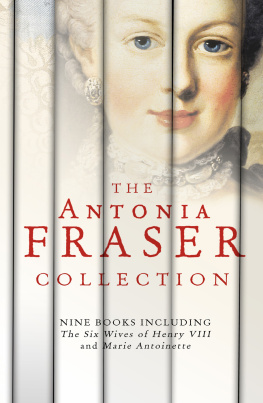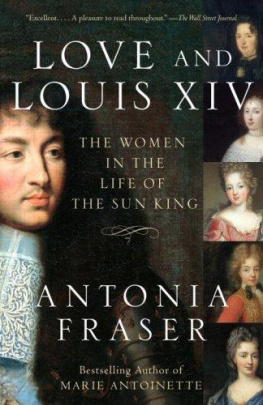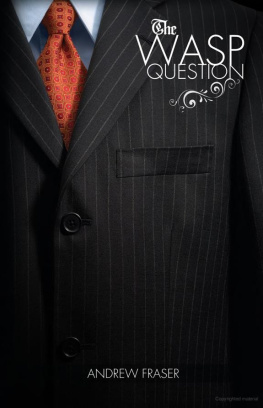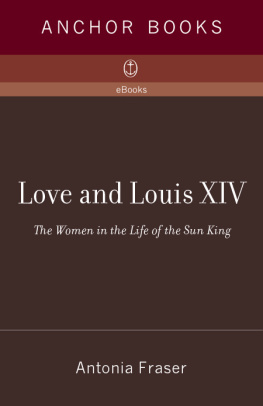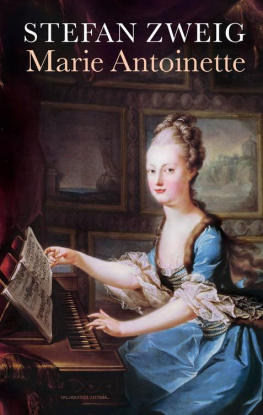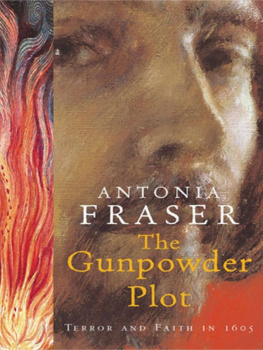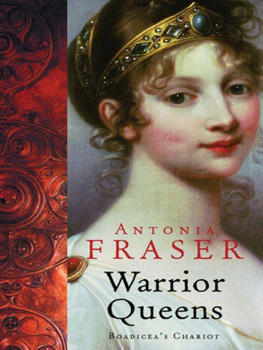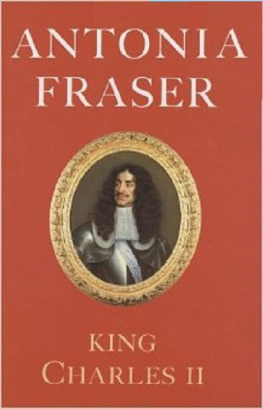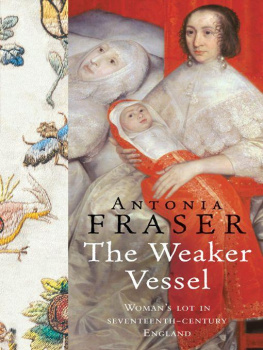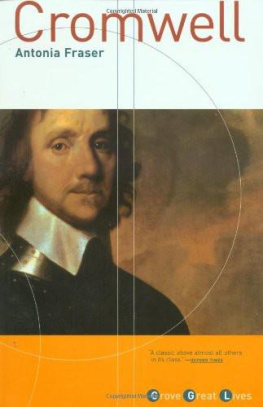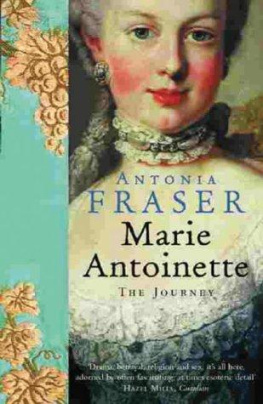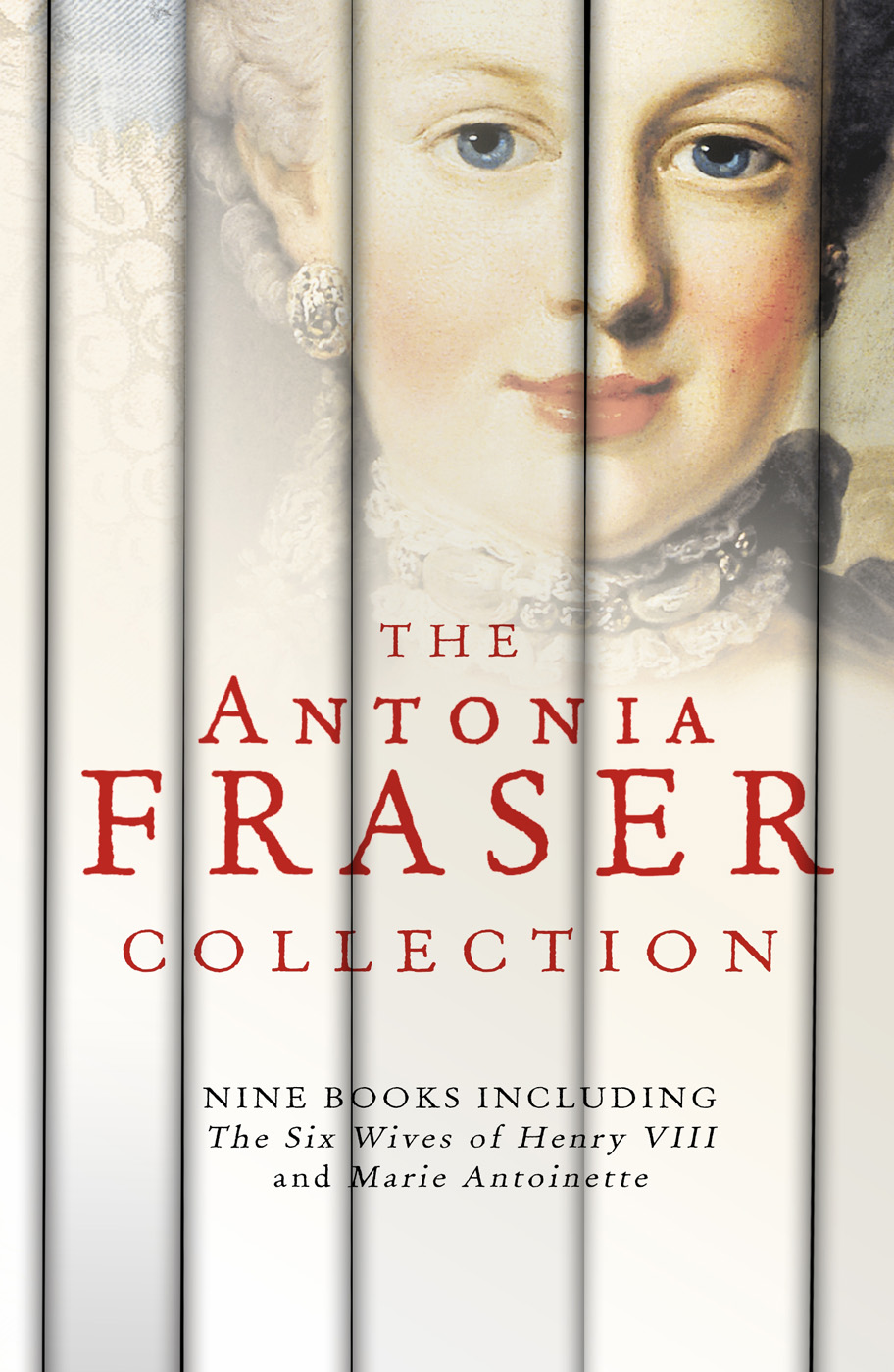The Antonia Fraser Collection
Mary Queen of Scots
Cromwell
King Charles II
The Weaker Vessel
Warrior Queens
The Six Wives of Henry VIII
The Gunpowder Plot
Marie Antoinette
Love and Louis XIV

Antonia was awarded the Norton Medlicott Medal by the Historical Association in 2000 for her historical non-fiction and made DBE in 2011. Her latest historical book is Love and Louis XIV: The Women in the Life of the Sun King, published by Phoenix. She was married to Harold Pinter, who died on Christmas Eve 2008: her bestselling memoir of their life together Must You Go? was published in 2010. She was awarded the Prix du Meilleur Livre tranger (Essai) in 2010 for the French edition of the book. Visit her website at www.antoniafraser.com
Mary Queen of Scots
Cromwell: Our Chief of Men
James VI of Scotland, 1 of England
(Kings and Queens series)
King Charles II
The Weaker Vessel: Womans Lot in Seventeenth-Century England
The Warrior Queens: Boadiceas Chariot
The Six Wives of Henry VIII
The Gunpowder Plot: Terror and Faith in 1605
Marie Antoinette: The Journey
Love and Louis XIV: The Women in the Life of the Sun King
Must You Go?: My Life with Harold Pinter
Perilous Question: The Drama of the Great Reform Bill 1832
A Phoenix Paperbacks ebook
Mary Queen of Scots first published in Great Britain in 1969 by Weidenfeld & Nicolson and in ebook in 2010 by Weidenfeld & Nicolson.
Cromwell first published in Great Britain in 1973 by Weidenfeld & Nicolson and in ebook in 2011 by Weidenfeld & Nicolson.
King Charles II first published in Great Britain in 1979 by Weidenfeld & Nicolson and in ebook in 2011 by Weidenfeld & Nicolson.
The Weaker Vessel first published in Great Britain in 1984 by Weidenfeld & Nicolson and in ebook in 2011 by Weidenfeld & Nicolson.
The Warrior Queens first published in Great Britain in 1988 by Weidenfeld & Nicolson and in ebook in 2011 by Weidenfeld & Nicolson.
The Six Wives of Henry VIII first published in Great Britain in 1992 by Weidenfeld & Nicolson and in ebook in 2011 by Weidenfeld & Nicolson.
The Gunpowder Plot first published in Great Britain in 1996 by Weidenfeld & Nicolson and in ebook in 2010 by Weidenfeld & Nicolson.
Marie Antoinette first published in Great Britain in 2001 by Weidenfeld & Nicolson and in ebook in 2010 by Weidenfeld & Nicolson.
Love and Louis XIV first published in Great Britain in 2006 by Weidenfeld & Nicolson and in ebook in 2008 by Weidenfeld & Nicolson.
This ebook published in 2013 by Phoenix
Mary Queen of Scots Antonia Fraser 1969
Cromwell Antonia Fraser 1973
King Charles II Antonia Fraser 1979
The Weaker Vessel Antonia Fraser 1984
The Warrior Queens Antonia Fraser 1988
The Six Wives of Henry VIII Antonia Fraser 1992
The Gunpowder Plot Antonia Fraser 1996
Marie Antoinette Antonia Fraser 2001
Love and Louis XIV Antonia Fraser 2006
The right of Antonia Fraser to be identified as the author of this work has been asserted in accordance with the Copyright, Designs and Patents Act 1988.
All rights reserved. No part of this publication may be reproduced, stored in a retrieval system or transmitted in any form or by any means, without the prior permission in writing of the publisher, nor to be otherwise circulated in any form of binding or cover other than that in which it is published without a similar condition, including this condition, being imposed on the subsequent purchaser.
A CIP catalogue record for this book is available from the British Library.
ISBN: 978-1-7802-2631-6
The Orion Publishing Group Ltd
Orion House
5 Upper Saint Martins Lane
London, WC2H 9EA
An Hachette UK company
www.orionbooks.co.uk
Contents
Mary Queen of Scots

ANTONIA FRASER

For George Weidenfeld
To salute his 90th birthday and
celebrate nearly 60 years of friendship
Contents

A King is historys slave.
History, that is the unconscious general swarm-life
of mankind, uses every moment of the life of kings,
as a tool for its own purposes.
Tolstoy


I had two principal aims when I began to write this biography. First, being possessed since childhood by a passion for the subject of Mary Queen of Scots, I wished to test for myself the truth or falsehood of the many legends which surround her name. In order to tear away these cobwebs or in certain cases reverently replace them I delved into as many published and unpublished sources as I could discover, taking as my starting-point Marys own letters and the calendars of state papers (although of course there may well be some sources of which I was unhappily ignorant). Secondly, for the sake of the general reader, I hoped to set Mary anew in the context of the age in which she lived. In the course of my own inquiries I was surprised to discover that despite the enormous quantity of research on the sixteenth century published during the last fifty years, radically changing our attitudes to certain of its aspects, no general life of Mary has yet appeared, taking it all into account. There have been detailed treatments of certain episodes in her life notably that of the Kirk oField murder and the Casket Letters, and later the Babington Plot and Stefan Zweigs fascinating psychological interpretation, written in the thirties. But the last full-length biography, giving documentation, was that of T. F. Henderson in 1905. So in the end my two aims converged, and I found myself with the single objective of showing, with as much accuracy as is possible in the light of modern research, what Mary Queen of Scots must have been like as a person.
In the interests of clarity, I have not entered into the various complications of dating in the sixteenth century, i.e. I have ignored the fact that the calendar year was held to start on 25 March during this period, and have used the modern style of dates starting on 1 January throughout. I have also ignored the ten days difference between English and European dates in the period of the Babington Plot, due to the fact that the adjustment to the Gregorian calendar was not made in England until the eighteenth century; and, in order to avoid confusion, have given the dates of letters coming from abroad as if they originated in England.
With regard to Scots words and spelling, the documents both in Scots and French notably Queen Marys own letters, which were nearly always written in French I have translated, adapted to modern spelling, and in certain cases, paraphrased the text, as it seemed to me necessary to make the meaning clear to the general reader today.

